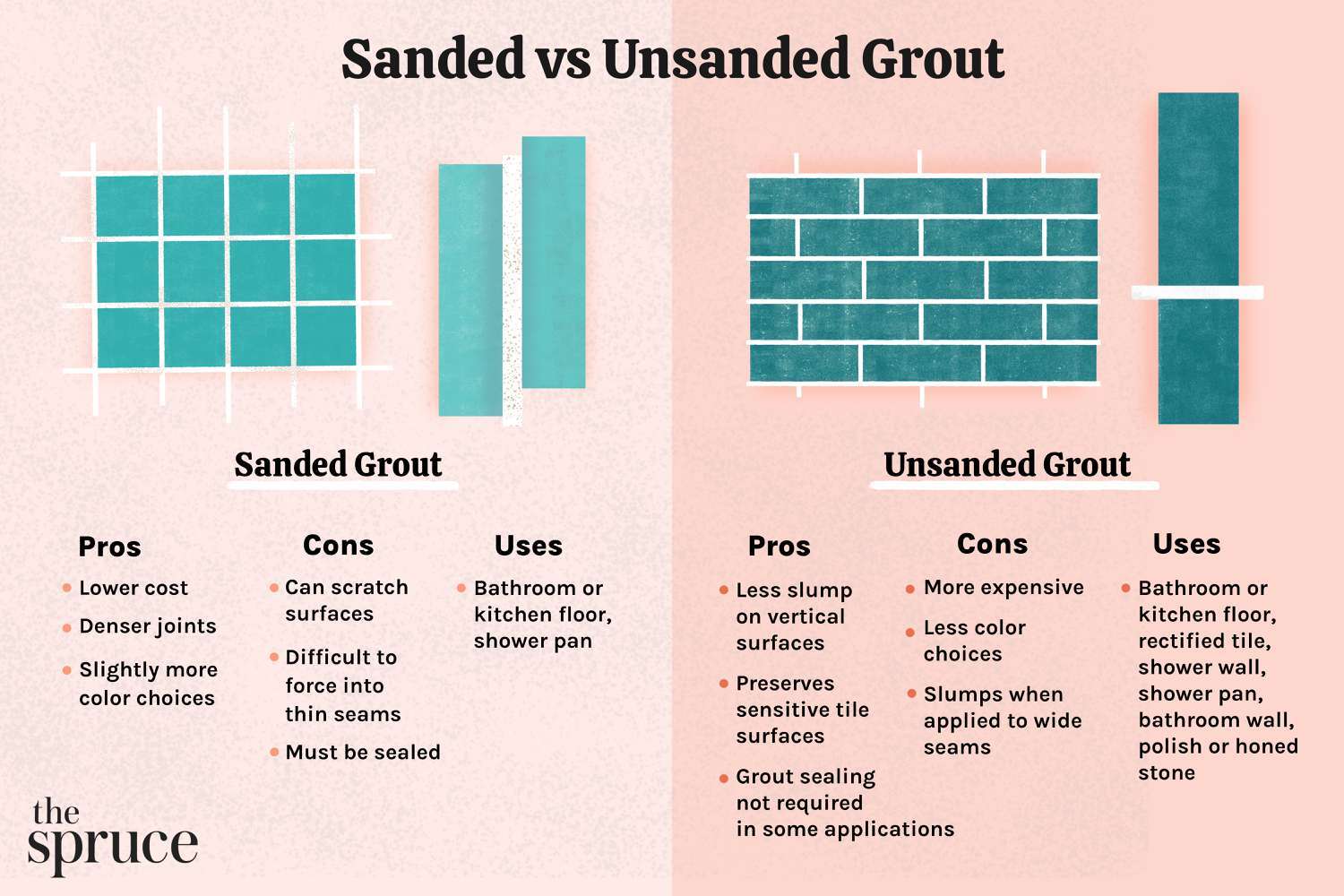Sanded Vs Unsanded Grout: Choose the Perfect Fit!

When it comes to choosing the right grout for your tiling project, there are two main options to consider: sanded grout and unsanded grout. Both types have their own unique characteristics and are suitable for different applications. In this article, we will explore the differences between sanded and unsanded grout to help you make an informed decision for your next home improvement project.

Sanded Grout
Sanded grout is a type of grout that contains fine sand particles, which give it a gritty texture. This type of grout is ideal for filling in larger gaps between tiles, typically those that are 1/8 inch wide or larger. The sand in sanded grout helps to prevent shrinkage and cracking, making it a durable option for high-traffic areas.
| Pros | Cons |
|---|---|
| Great for wider gaps | Not suitable for narrow gaps |
| Durable and strong | Can scratch delicate tiles |
| Less likely to crack | Not recommended for vertical surfaces |
Best Uses For Sanded Grout
- Outdoor tiling projects
- High-traffic areas such as kitchen floors
- Large gaps between tiles
It’s important to note that sanded grout should not be used on delicate or easily scratched tiles, as the sand particles can cause damage. Additionally, sanded grout is not recommended for vertical surfaces, as it is more prone to slumping.
:max_bytes(150000):strip_icc()/sanded-vs-unsanded-tile-grout-1822584-04-e7609a8d058248158ad4540e98e2baea-9c68798c67ee4e1dadb838953923cdcf.jpeg)
Unsanded Grout
Unsanded grout, on the other hand, is a smooth mixture that does not contain sand particles. This type of grout is best suited for narrow gaps between tiles, typically those that are 1/8 inch wide or smaller. Unsanded grout is easier to work with and is less likely to scratch delicate tiles.
| Pros | Cons |
|---|---|
| Ideal for narrow gaps | Prone to shrinkage and cracking |
| Smooth texture | Less durable than sanded grout |
| Great for vertical surfaces | Not recommended for wide gaps |
Best Uses For Unsanded Grout
- Bathroom walls
- Backsplash tiling
- Delicate tiles such as marble or glass
Unsanded grout is more flexible than sanded grout, making it a better choice for vertical surfaces. However, it is important to keep in mind that unsanded grout is not as strong or durable as sanded grout, so it may not be the best option for high-traffic areas.
Choosing the Right Grout for Your Project
When deciding between sanded and unsanded grout, there are a few key factors to consider. The width of the gaps between your tiles is one of the most important considerations, as this will determine which type of grout is most suitable. If you have narrow gaps, unsanded grout is likely the better choice, while wider gaps will benefit from the strength of sanded grout.
Additionally, the location of your tiling project should also influence your decision. If you are working on a floor or outdoor project, sanded grout may be the more durable option. For vertical surfaces or delicate tiles, unsanded grout is the safer choice.
Ultimately, the choice between sanded and unsanded grout comes down to the specific needs of your project. By understanding the differences between these two types of grout and considering the requirements of your tiling job, you can make an informed decision that will result in a successful and long-lasting installation.
Whether you opt for the strength of sanded grout or the flexibility of unsanded grout, both types have their own advantages and are suitable for different applications. By choosing the right grout for your project, you can ensure a professional finish that will stand the test of time.
So, the next time you embark on a tiling project, consider the differences between sanded and unsanded grout to determine which option is best suited for your specific needs. With the right choice of grout, you can achieve a beautiful and durable tile installation that will enhance the look and functionality of your space for years to come.



